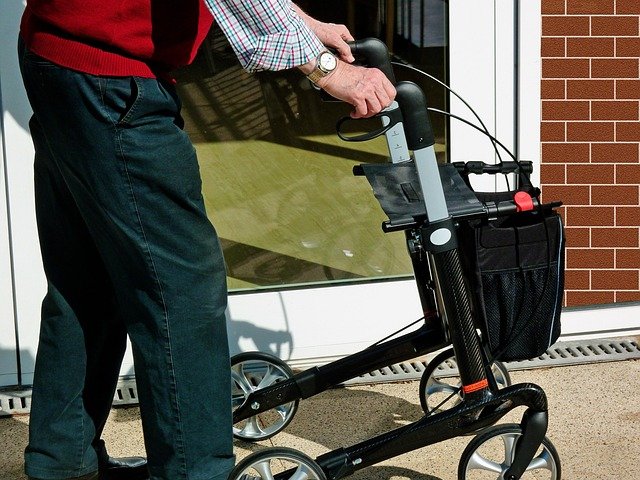Explore helpful tips on fall prevention options for seniors
Falls represent one of the most serious health risks for older adults, potentially leading to injuries, decreased mobility, and reduced independence. Understanding effective fall prevention strategies, including proper mobility aids and home modifications, can significantly improve seniors' safety and quality of life. This comprehensive guide explores essential tools and practical approaches to help older adults maintain stability and confidence while navigating daily activities.

As we age, maintaining independence becomes increasingly important, yet falls pose a significant threat to this autonomy. According to the Centers for Disease Control and Prevention (CDC), one in four Americans aged 65 and older experiences a fall each year, making fall prevention a critical concern for seniors and their caregivers. Implementing effective fall prevention strategies—from selecting appropriate mobility aids to creating safer living environments—can dramatically reduce these risks while supporting continued independence and confidence.
Discover essential fall prevention tools for enhanced mobility
Mobility aids serve as crucial tools in preventing falls among seniors. Walkers, in particular, provide substantial stability and support for those experiencing balance issues or weakness. Standard walkers offer maximum stability with their four-point design but require lifting with each step. Rolling walkers (rollators) feature wheels for smoother movement and typically include seats for resting, brakes for safety, and baskets for carrying items.
When selecting a walker, proper sizing is paramount. The handles should position at wrist height when standing with arms relaxed at the sides, allowing for a slight elbow bend (about 15 degrees) when gripping the handles. Weight capacity is another critical consideration—most standard walkers support between 250-300 pounds, while bariatric models can accommodate up to 500 pounds. Features like foldability for transportation, ergonomic hand grips for comfort, and terrain-appropriate wheels can significantly enhance usability and safety.
Gain insights into safe home adjustments to prevent accidents
Creating a safer home environment represents one of the most effective approaches to fall prevention. Start with removing tripping hazards—secure loose rugs or remove them entirely, clear clutter from walkways, and manage electrical cords by routing them away from traffic areas. Proper lighting throughout the home, particularly in hallways, stairwells, and bathrooms, helps seniors navigate spaces safely, especially at night.
Bathroom modifications deserve special attention as these areas present heightened fall risks due to wet, slippery surfaces. Installing grab bars near toilets and in shower areas provides crucial support during transfers. Non-slip mats in tubs and shower floors offer additional traction, while raised toilet seats reduce the effort required for sitting and standing. For homes with stairs, ensuring secure handrails on both sides creates essential support points during ascent and descent.
Understand how to maintain stability through physical activity
Regular physical activity plays a fundamental role in fall prevention by improving strength, flexibility, balance, and coordination. Programs specifically designed for seniors, such as tai chi, have demonstrated remarkable effectiveness in reducing fall risk by enhancing balance and body awareness. Even gentle exercises focusing on leg strength and stability can make significant differences in mobility confidence.
Balance exercises can be incorporated into daily routines—practicing standing on one foot while holding onto a sturdy chair, walking heel-to-toe, or performing gentle back leg raises all contribute to improved stability. For seniors with limited mobility, chair exercises offer safe alternatives that still strengthen crucial muscle groups. Before beginning any exercise regimen, consulting with healthcare providers ensures activities match individual capabilities and health conditions.
Explore practical tips for seniors using mobility devices
Using mobility aids correctly significantly impacts their effectiveness in preventing falls. When walking with a walker, proper technique involves positioning the device slightly ahead before stepping into it, maintaining good posture with eyes forward rather than looking down, and moving the walker forward only about an arm’s length with each step. Many seniors benefit from professional instruction from physical therapists who can demonstrate proper techniques and customize approaches based on individual needs.
Regular maintenance of mobility devices is equally important for safety. Check walker wheels for smooth operation, ensure brake systems function properly, and examine rubber tips on standard walkers for wear. Replace worn components promptly to maintain stability. For seniors transitioning to using walkers, practicing in a safe environment with supervision helps build confidence before independent use.
Enhance independence with smart strategies for daily activities
Adapting daily activities with fall prevention in mind helps seniors maintain independence safely. Simple adjustments like keeping frequently used items within easy reach, avoiding rushing to answer phones or doorbells, and wearing proper footwear with non-slip soles can significantly reduce fall risks. Supportive, low-heeled shoes that fit properly provide better stability than slippers, backless shoes, or high heels.
Technology offers additional support through personal emergency response systems that allow seniors to call for help if falls occur. Some advanced systems even detect falls automatically, providing peace of mind for both seniors and their families. Smartphone applications can also remind seniors to perform balance exercises, take medications that might affect balance, or track mobility patterns to identify potential concerns.
Falls among seniors aren’t inevitable—they’re often preventable through thoughtful preparation and appropriate supports. By implementing these strategies—from selecting proper mobility aids to creating safer living environments and maintaining physical strength—seniors can significantly reduce their fall risk while preserving independence. Remember that small changes can make substantial differences in safety and confidence, allowing older adults to continue engaging in meaningful activities with greater security.
This article is for informational purposes only and should not be considered medical advice. Please consult a qualified healthcare professional for personalized guidance and treatment.


